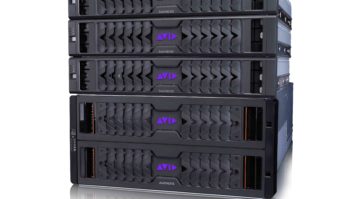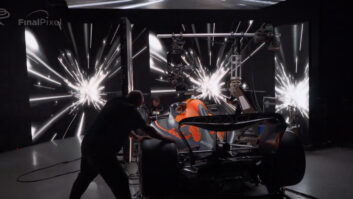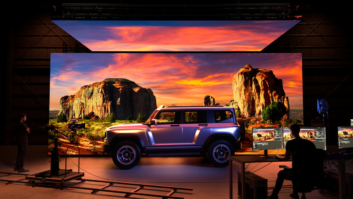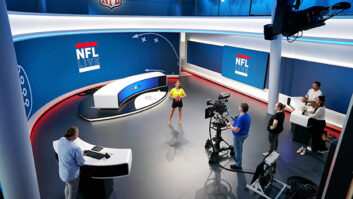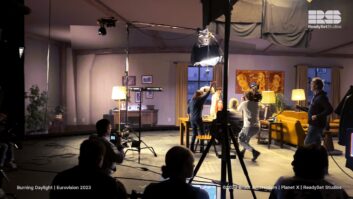Virtual production is undoubtedly one of the most fascinating technology developments shaping the future of post production. It brings a huge number of efficiencies to VFX workflows, and not just via The Mandalorian-esque LED screens driven by game engines. Today, VFX supervisors and filmmaking creatives can turn to a host of complex toolsets to visualise landscapes and characters – or any other on-screen element – both before and during principal photography.
But it’s not just for post; virtual production offers clear benefits right across the production workflow. Set designers can easily see what locations might look like with a whole host of different colour tile or brick without having to build or draw options. Stunt coordinators can use previz’ed scenes to help block the action. And on top of all of that, producers can see how these efficiencies impact their bottom line.
But what about editors? How do we see virtual production impacting the people responsible for turning every crew member’s contribution into a finished film?
Enhancing on-set editing
One of the key benefits virtual production offers editors – whether it’s for film, TV or advertising production – is the ability to be more involved on-set or on-location.
On-set editing is something many editors have long taken advantage of, since seeing action being shot and starting rough cuts as soon as rushes are captured enables them to ensure there’s the right level of coverage.
VFX supervisors and creative directors say the true benefit of this is that it allows artists and filmmakers to make creative decisions earlier. This immediacy can have a similar impact on editors, taking on-set editing much further. With the right virtual production workflows in place, editors can start rough cuts straight away on huge VFX-driven shows. They’re able to immediately see what the final images will look like, even if they feature fully-CG characters or entirely fabricated worlds; assets that they historically might not see for another few months.
Supercharging asset management
Virtual production will also have a huge impact on asset management – which opens up the window for creativity wider than ever.
Asset management will no longer revolve around managing rendered or rasterised audio and video during the final editing stages, as editors won’t need to wait to receive final rendered VFX shots. Instead, virtual production can enable a much more collaborative process between editors and VFX studios or artists.
With virtual production, editors can now manage in-progress visual assets, 3D models or VFX textures in context of the video they are associated with. Having access to all these elements, and the ability to render them throughout the entire post production process allows editors or filmmakers to make creative decisions later. This might involve changing a location via a virtual background or DMP, altering lighting, the time of day of a scene or even a camera angle.
This opens up the creative impact an editor can have in the editorial process. This is a gamechanger for editors, enabling them to have a serious creative impact on a project, without having to request reshoots or additional photography.
Playing with the timeline
This opening up of flexibility to be more creative also comes with benefits to the time needed to create the biggest blockbusting films.
If virtual production allows VFX supervisors and creative directors to start making decisions much earlier on in previz and on-set, it also does for editors and post production supervisors. Add to that the ability to make changes to visuals later into the process, closer to a final render and we’re seeing a real shift in the timeline being used in the creative process.
And to top this all off, these changes can be achieved without the time, personnel and power resources needed to constantly render shots to see how they look in a cut, and then send them back for amends, only to be rendered again. It’s not just creative efficiencies we see from the deployment of virtual production, but practical and economic ones as well.
The bottom line
When it comes to virtual production then, what was the talk of just VFX studios and filmmakers like James Cameron only a few years ago, is now a much larger and more complex beast.
Virtual production workflows, techniques and technologies are now impacting more of the filmmaking process – from the earliest stages of pre-production to the latest stages of post production. And we’re excited to see the flexibility and creative freedom it will continue to offer editors.
